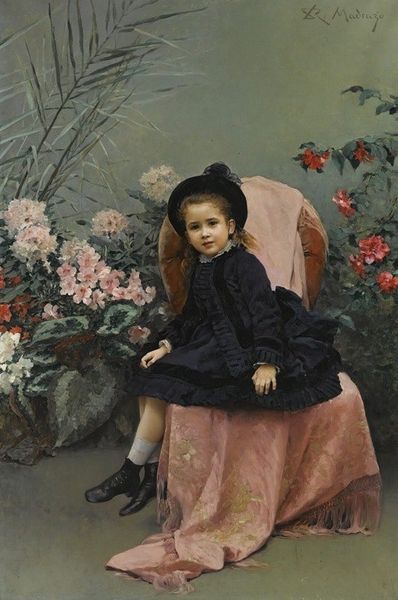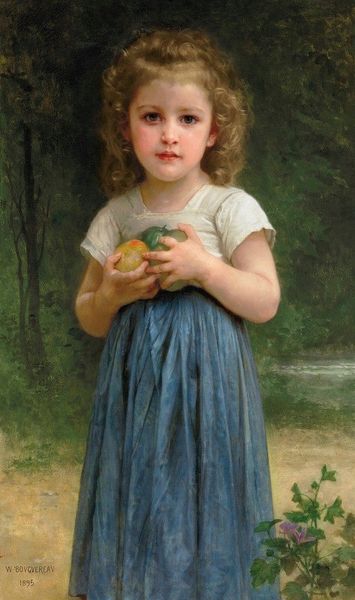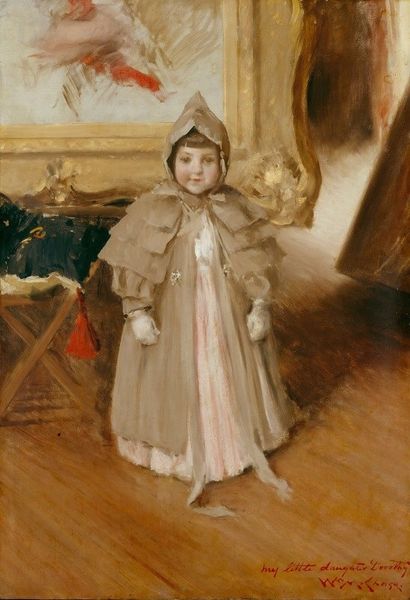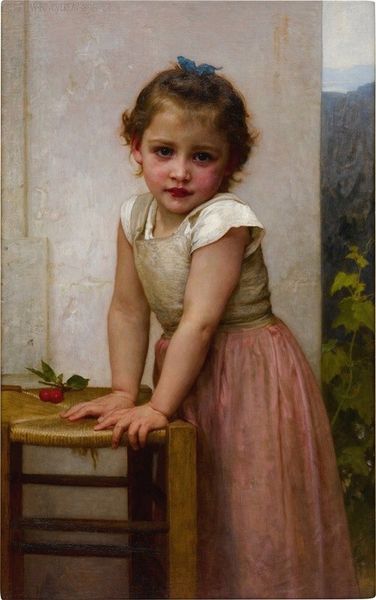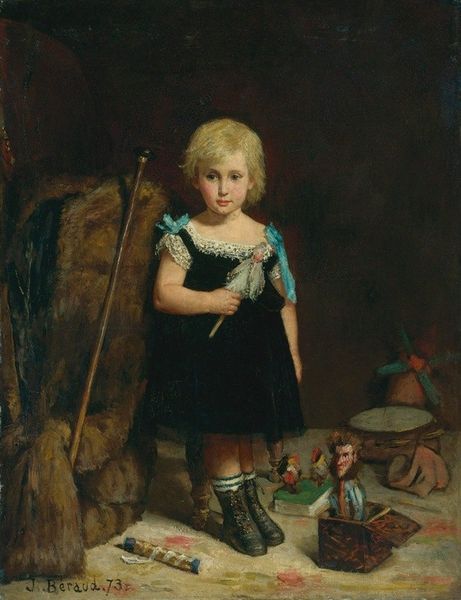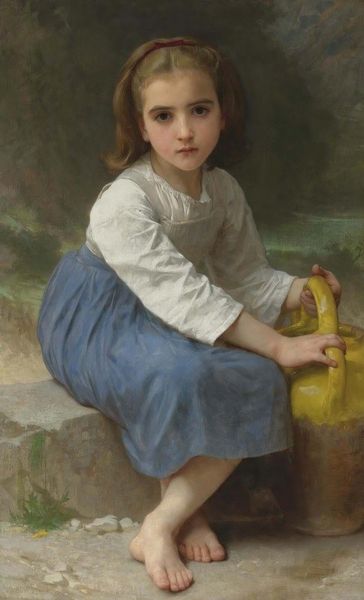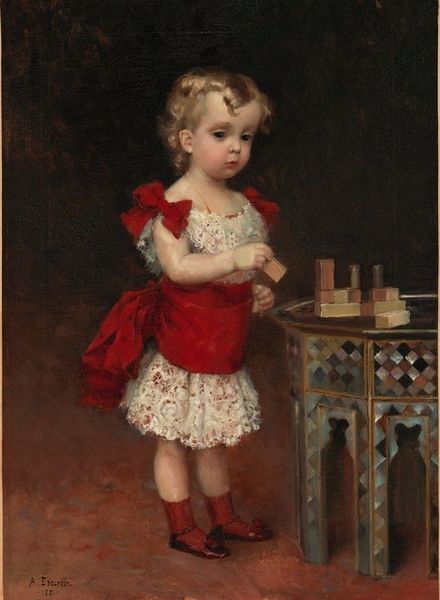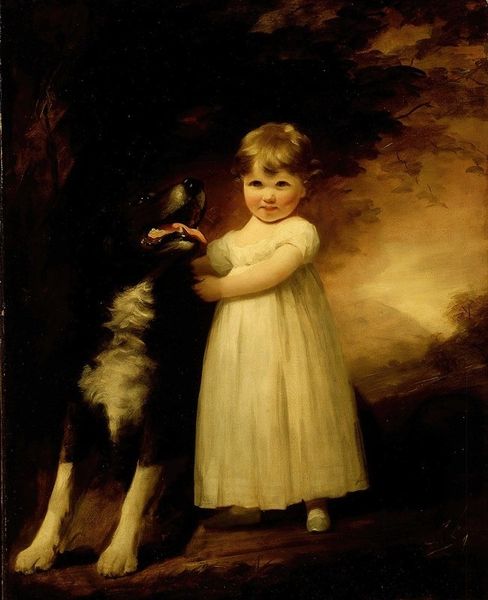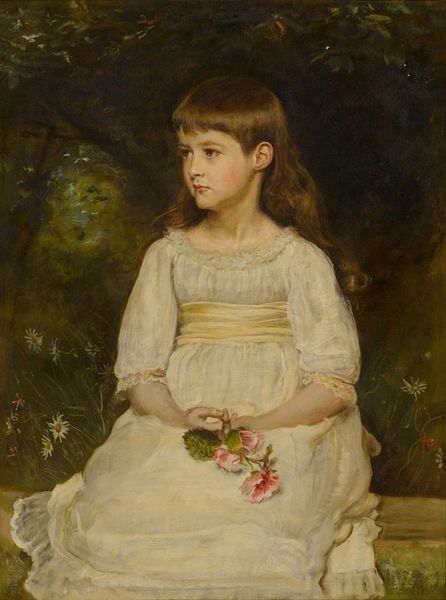
painting, oil-paint
#
portrait
#
gouache
#
figurative
#
painting
#
impressionism
#
oil-paint
#
feminist-art
#
genre-painting
Copyright: Public Domain: Artvee
Editor: So here we have Helene Schjerfbeck’s painting, "Little Gudrun," oil on canvas. The girl's dark clothing and serious face create such a contemplative atmosphere. What strikes you when you look at this painting? Curator: My attention is drawn to the textures and the way they speak to class and labor. Look at the stiff fabric of her dress compared to the velvet upholstery and the decorative fringe on the stool. This is carefully constructed material language; the labor required to create these textiles points to a social hierarchy. Editor: I never considered the texture of her dress as significant. So you're saying the materials represented are hinting at social class? Curator: Exactly! And consider the labor of Schjerfbeck herself. The application of paint – those thick, visible brushstrokes – transforms the very act of painting into a type of physical labor. This challenges the conventional view of artistic genius as separate from manual work. Think of who has historically been allowed, or not allowed, to perform this "labor". Does the "Little Gudrun’s" pose appear to invite us to challenge that assumption? Editor: That's a completely fresh take for me. So, instead of just admiring the subject or composition, we're focusing on the materiality of the art object and the act of creating it, and questioning who gets to make and consume it? Curator: Precisely. We're considering the painting not just as a representation, but as a physical manifestation of social and economic relations, engaging with both the literal materials and their production, and by extension, the systems and power structures at play. Editor: This really gives me a new perspective to consider. I'm going to think differently about portraits from now on, keeping a close watch on material realities! Curator: Indeed, it adds a rich dimension, doesn't it? It moves the discussion of art beyond aesthetics and symbolism, into a tangible reality of how and why art is made and what function it serves in a specific place and time.
Comments
No comments
Be the first to comment and join the conversation on the ultimate creative platform.


